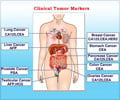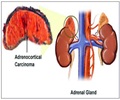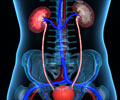Glycans have been found to act as tumour suppressors in breast and prostate cancers
Scientists at Burnham Institute for Medical Research (Burnham) have revealed that glycans, the carbohydrates that anchor cells into place, have been found to act as tumour suppressors in breast and prostate cancers.
These specialized complex sugar molecules (glycans) play a critical role in cell adhesion in normal cells, and their decrease or loss leads to increased cell migration by invasive cancer cells and metastasis.The researchers, led by Dr. Minoru Fukuda, observed that an increase in expression of the enzyme that produces these glycans, B3GnT1, resulted in a significant reduction in tumour activity.
The specialized glycans are capable of binding to laminin, and are attached to the a-DG cell surface protein. This binding facilitates adhesion between epithelial and basement membrane cells and prevents cells from migrating.
The team demonstrated that B3GnT1 controls the synthesis of laminin-binding glycans in concert with the genes LARGE/LARGE2.
Down-regulation of ß3GnT1 reduces the number of glycans, leading to greater movement by invasive cancer cells.
But when the researchers forced aggressive cancer cells to express ß3GnT1, the laminin-binding glycans were restored and tumour formation decreased.
Advertisement
The scientists demonstrated that ß3GnT1 plays a key role in forming laminin-binding glycans attached to a-DG, which in turn reduces cancer cell movement.
Advertisement
The research has been published in the journal Proceedings of the National Academy of Sciences.
Source-ANI
RAS















